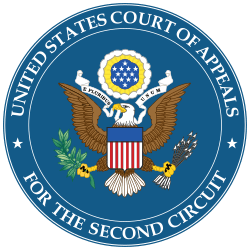New York State Restaurant Association v. New York City Board of Health facts for kids
New York State Restaurant Association v. New York City Board of Health is an important court case. It was decided by the Second Circuit Court of Appeals. This case was about a new rule in New York City.
In January 2007, New York City made a new law. It was the first city in America to do this. The law said that big restaurant chains had to show the number of calories in all their menu items. This meant people could easily see how much energy was in their food.
The New York State Restaurant Association (NYSRA) did not like this new rule. They decided to sue the city. The NYSRA argued that the rule took away their freedom of speech. They said it was against the First Amendment. They also said a federal law, the Nutrition Labeling and Education Act (NLEA) of 1990, already covered this. They felt the city's rule went against the federal law.
The Second Circuit Court of Appeals listened to both sides. In the end, the court did not agree with the Restaurant Association. The court decided to keep the New York City law. This meant the city could still require restaurants to show calorie counts.
A politician named Henry Waxman supported New York City. He was a main person who helped create the NLEA law. He sent a special letter, called an amicus brief, to the court. This letter explained why he thought New York City's rule was fair.
Contents
What Was This Court Case About?
This case was a legal fight. It happened between a group of restaurants and New York City. The city wanted restaurants to share information. They wanted people to know the calorie count of their food. The restaurants felt this was not fair. They believed it hurt their business.
Why Did New York City Want Calorie Counts?
New York City wanted people to be healthier. They thought that knowing calorie counts would help. If people saw the calories, they might choose healthier foods. This could help fight problems like obesity. The city believed this rule was good for public health.
How Did the Rule Work?
The rule applied to large restaurant chains. These are restaurants with many locations. They had to print the calorie numbers right on their menus. This made it easy for customers to see. It was a simple way to give people more information.
Why Did Restaurants Sue the City?
The New York State Restaurant Association felt the rule was wrong. They had two main arguments. They believed the rule broke their rights.
Was It About Freedom of Speech?
The restaurants argued that showing calorie counts was forced speech. They said it was like the government telling them what to say. They felt this went against their First Amendment rights. The First Amendment protects freedom of speech. This includes commercial speech, which is speech used for business.
What is Commercial Speech?
Commercial speech is when businesses advertise or talk about their products. The First Amendment protects this type of speech too. However, the government can sometimes regulate it. This happens if the speech is misleading or if there's a good reason to control it. The restaurants argued that the calorie rule was too much control.
Did Federal Law Already Cover This?
The restaurants also argued about a federal law. This law is called the Nutrition Labeling and Education Act (NLEA) of 1990. This law already sets rules for food labels. The restaurants said that the NLEA already covered nutrition information. They felt New York City's rule was trying to do the same thing. They believed the federal law should be the only rule. This idea is called "preemption."
What Does "Preemption" Mean?
"Preemption" means that a higher level of government's law takes priority. For example, a federal law can "preempt" a state or city law. If a federal law says one thing, a city cannot make a different rule. The restaurants argued that the NLEA "preempted" New York City's calorie rule.
What Did the Court Decide?
The Second Circuit Court of Appeals looked at all the arguments. They carefully considered the freedom of speech claim. They also looked at the argument about federal law.
Did the Court Agree with the Restaurants?
The court did not agree with the New York State Restaurant Association. They said that the calorie rule did not violate freedom of speech. The court felt that the rule was a good way to help public health. They also said that the federal NLEA law did not stop New York City's rule.
Why Was the Rule Upheld?
The court decided that the calorie rule was a reasonable way to share facts. They said it was not forcing restaurants to say something untrue. Instead, it was giving important information to customers. The court also found that the NLEA did not stop cities from making their own rules about menus. This meant New York City's law was allowed to stand.


